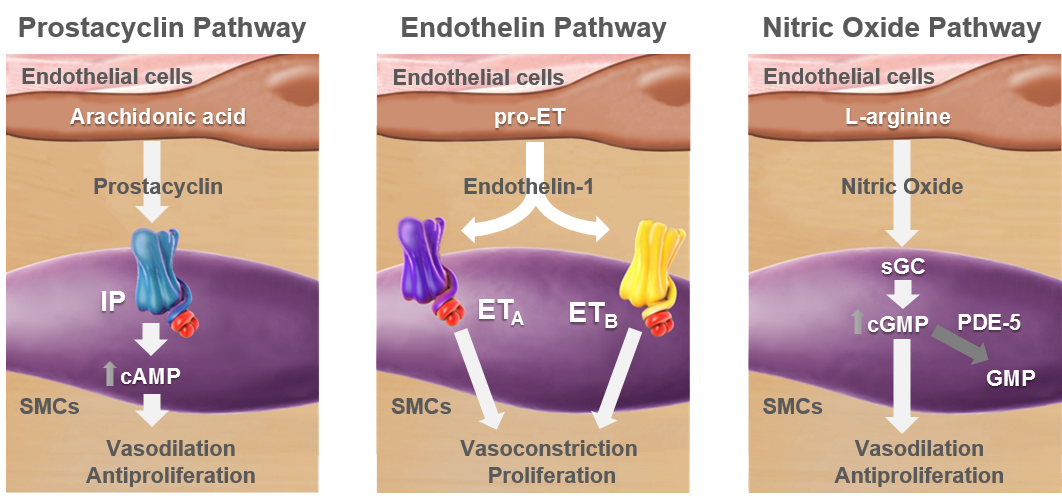Prostacyclin in PAH
Prostacyclin: A fundamental pathway in PAH

cAMP: cyclic adenosine monophosphate; cGMP: cyclic guanosine monophosphate; ETA: endothelin receptor type A; ETB: endothelin receptor type B; IP: prostacyclin receptor; PDE-5: phosphodiesterase type 5; pro-ET: pro-endothelin; sGC: soluble guanylate cyclase; SMCs: smooth muscle cells.
In pulmonary arterial hypertension (PAH), prostacyclin and nitric oxide levels are decreased, and endothelin levels are increased.5 Reduced levels of prostacyclin synthase are found in patients with idiopathic pulmonary arterial hypertension (IPAH).6 Based on animal data, imbalances in prostacyclin and endothelin levels have been implicated in the following:
The clinical significance of prostacyclin deficit in humans is unknown. Animal data cannot imply a benefit in humans.
The prostacyclin pathway is a key treatment target in PAH.
- The reduced level of prostacyclin has been implicated as an important pathological feature of PAH5
- The addition of prostacyclin has been shown to play a critical role in the management of PAH7,10
Frequency of positive PGI2 (prostacyclin) synthase production in IPAH and normal lungs6

Frequency of positive PGI2 synthase production in lungs of normal patients (n=7) and in patients with IPAH (n=12). Results shown are the mean percentages of positive vessels (p=0.015 for normal versus IPAH small vessels, and p=0.03 for normal versus IPAH medium-sized vessels; p-value=nonsignificant for normal versus PAH large vessels6).
VENTAVIS cellular effects
4-hour elevation of cAMP levels following single inhaled dose of VENTAVIS® (iloprost) Inhalation Solution in 10 healthy adults21
The association between increased plasma cAMP levels and clinical outcomes in PAH has not been established.

Horizontal line = median value; box = middle quartiles; whiskers = minimum and maximum values.
†p<0.05 vs baseline.21
Cyclic adenosine monophosphate (cAMP) is the main mediator of the vasodilatory and antiproliferative effects of prostacyclin, prostacyclin analogs, or nonprostanoid prostacyclin receptor agonists.5,12 Prostacyclin acts through activation of the cAMP-dependent pathways.5